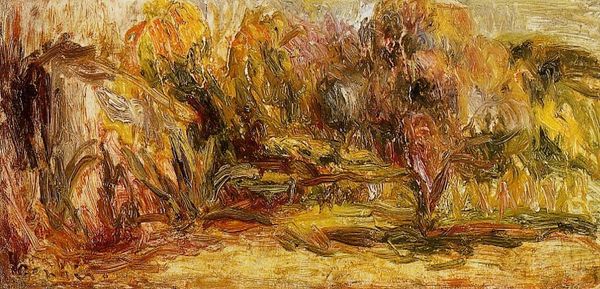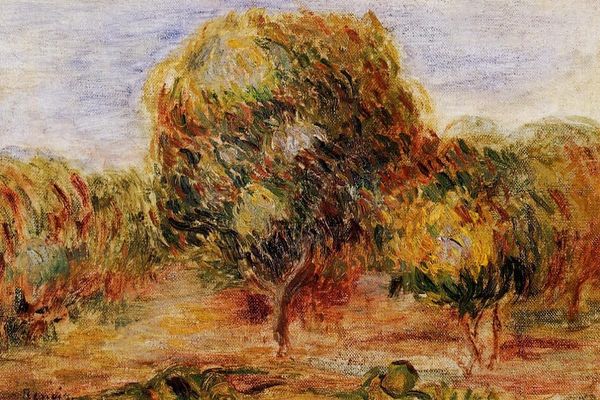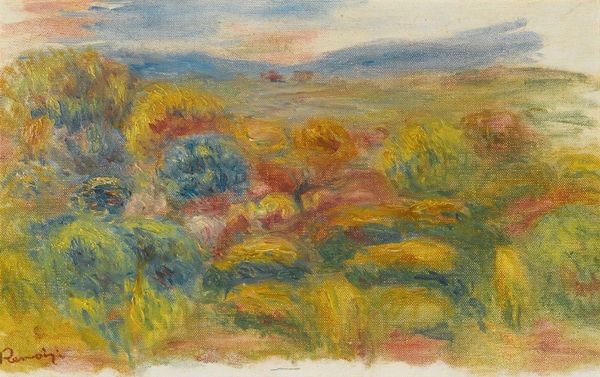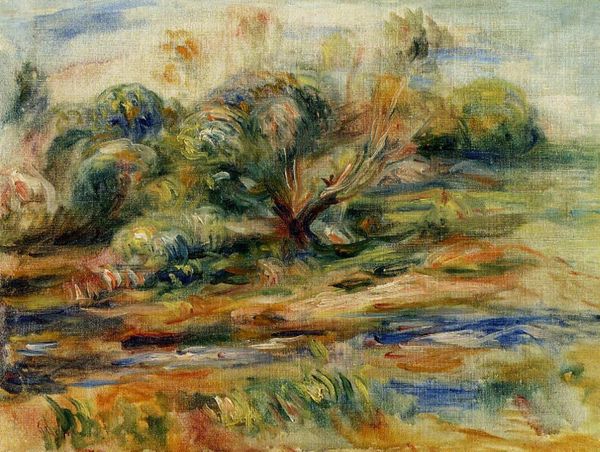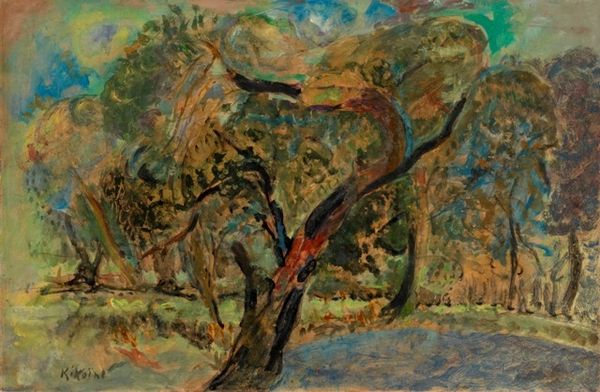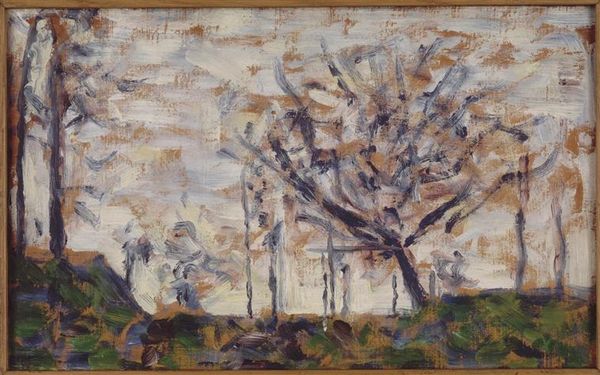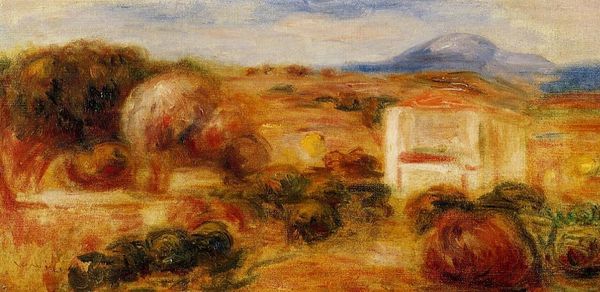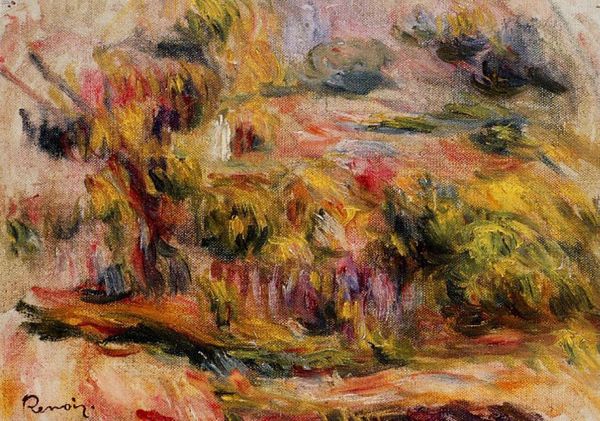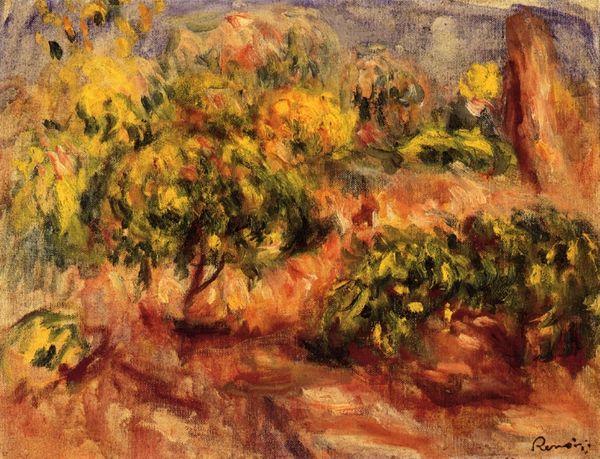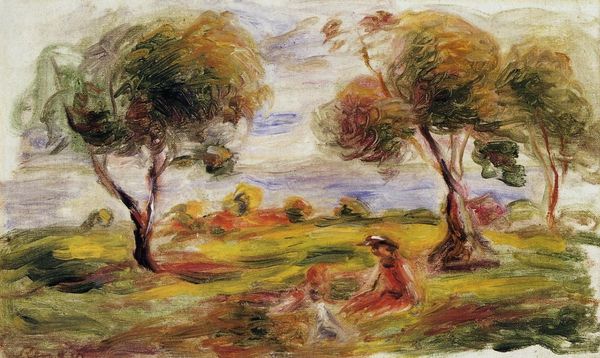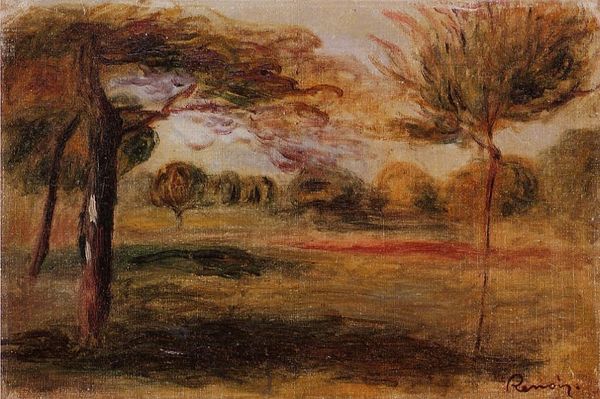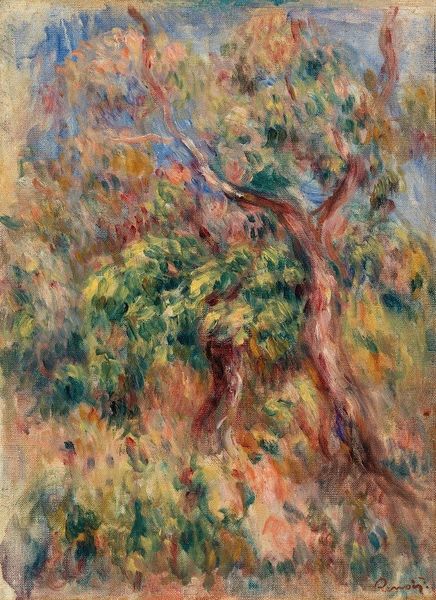
painting, plein-air, oil-paint
#
painting
#
impressionism
#
plein-air
#
oil-paint
#
landscape
#
impressionist landscape
#
cityscape
Copyright: Public domain
Curator: Before us, we have "In the Garden of Collettes at Cagnes" by Pierre-Auguste Renoir. The painting, rendered with oil paints and in a plein-air style, presents an impressionistic take on a garden landscape. Editor: My immediate impression is of wind. The trees are all bent at angles, fighting against something unseen but clearly felt. The colour palette seems deliberately muted, almost as though seen through mist. Curator: That’s astute. Consider how Renoir's application of colour transcends mere representation; it becomes almost tactile. Notice the strokes. Look at the visible brushwork, the daubs and dashes of paint. Observe how the canvas texture subtly contributes to the overall effect, giving the artwork its structural unity and a specific spatial coherence. Editor: Indeed. The Collettes was the estate he moved to in his later years, escaping the Parisian art scene. It suggests his retreat, his deliberate distancing from urban anxieties, but also speaks volumes about the realities of the elderly in those times and what this escape enabled in the life of a bourgeois artist. The ability to withdraw to such idyllic settings was undeniably linked to economic privileges denied to the broader population. Curator: An interesting and perhaps needed corrective to an idealised view. But let us appreciate the work on its own terms, its commitment to the sheer sensation of light, of air. The very act of painting outdoors in that Impressionist way signifies a deliberate engagement with opticality, with seeing as a process of cognition, even as an end in itself. The focus isn’t documentary. Editor: No, but art never exists in a vacuum. How might Renoir’s depictions, so focused on leisure and beauty, reflect or refract larger sociopolitical narratives about class, access, and representation? And thinking more about the estate itself, we must ask to whom did this garden belong, and whose labour sustained its apparent idyll? These aspects have profound relevance when we analyse it now. Curator: Well, you certainly offer a provocative perspective, widening the lens from art as form to art as cultural product. And perhaps it’s precisely within that tension—the purely aesthetic and the socio-political—that this artwork finds its enduring significance. Editor: Agreed. Considering both its construction and its contexts allows us to experience it more wholly, not just as an Impressionist study but also as a record of cultural history, of privilege and, potentially, exclusion.
Comments
No comments
Be the first to comment and join the conversation on the ultimate creative platform.
